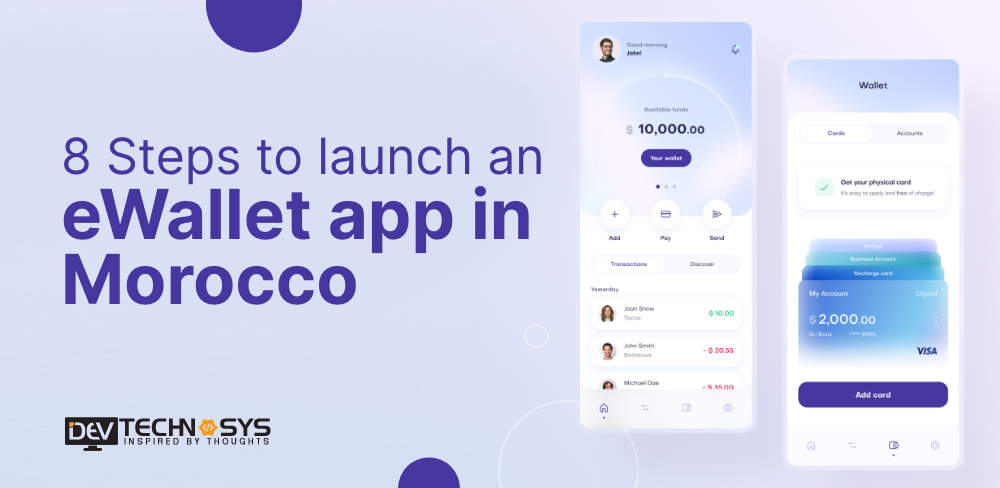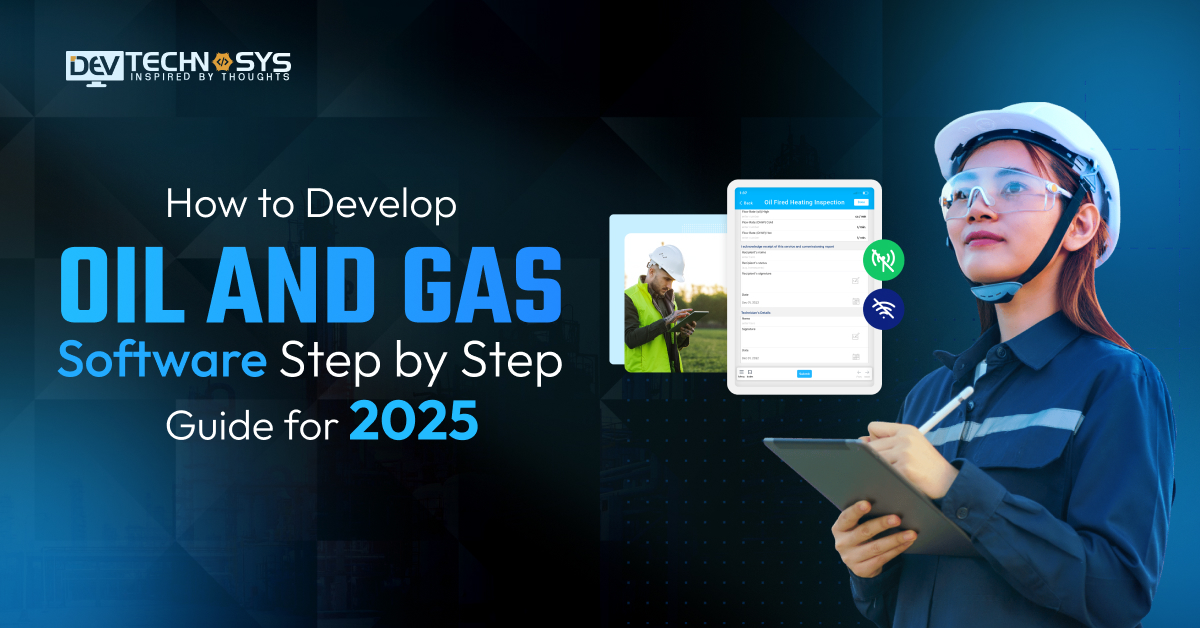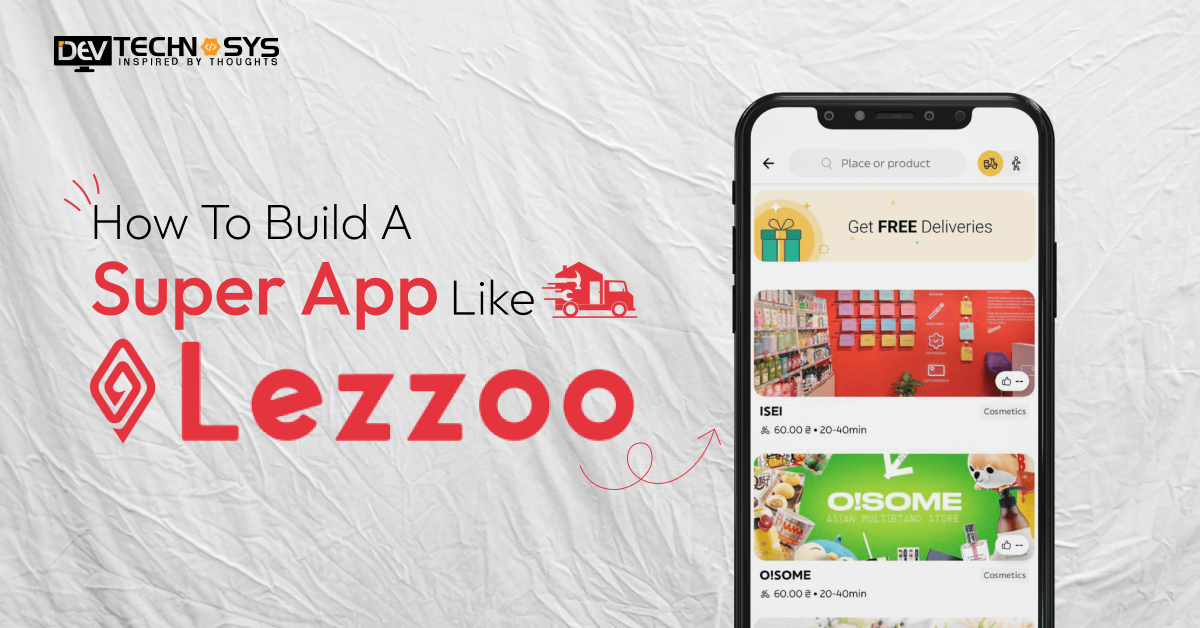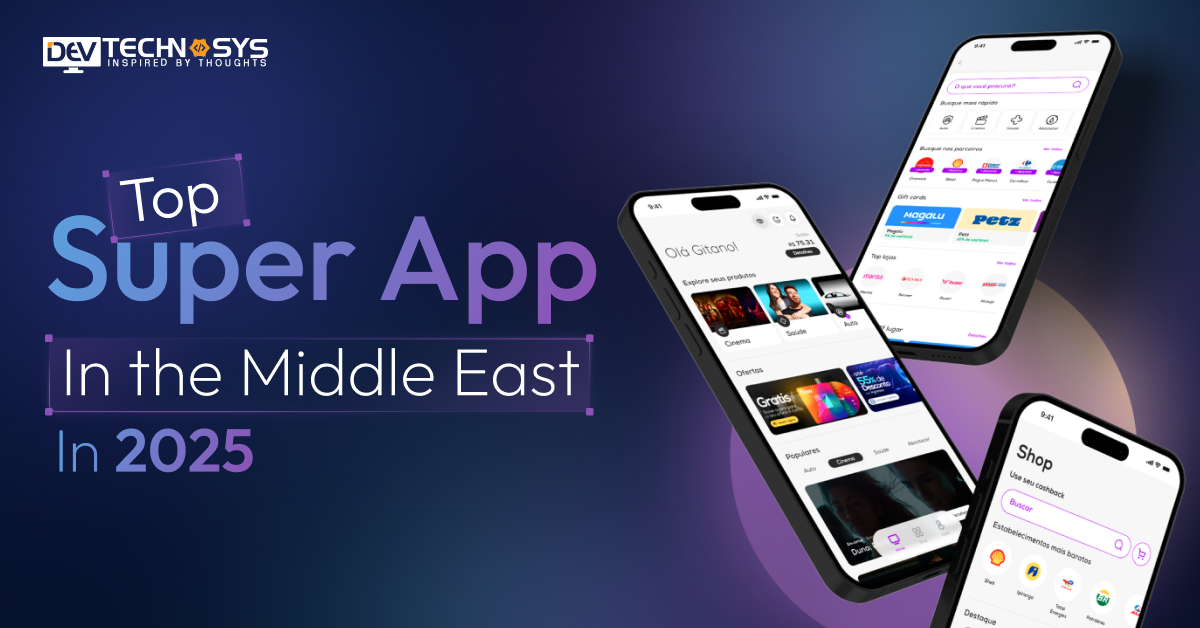Are you looking to launch an ewallet app in Morocco? Then you have reached the correct place. In today’s fast-paced world, people expect everything to be quick, straightforward, and uncomplicated. This is especially true when it comes to managing their finances.
The digital wallet has revolutionized the way people manage their money. They don’t require actual cards or cash to complete transactions, and they can do it fast and efficiently.
Digital wallet apps are in high demand due to digitalization. While digital wallet app development is a profitable business opportunity, it requires careful planning.
Statista predicts that digital wallet apps such as Apple Pay and Google Pay will double in North America between 2020-2025, according to Statista. The market in Asia will be much larger, however. It is advisable to develop a digital wallet app if you wish to take advantage of this large market.
Let’s get started, entrepreneurs or business owners looking to expand their offerings.
This blog will walk you through the ewallet app development guide, including its features, cost, and tech stack.
What is an eWallet App?
An ewallet software application allows users to securely and quickly make electronic money transactions. It can store the user’s bank account and card information. eWallets allow you to make both online and offline payments, without the need to input your payment information every time. Some eWallets allow you to store and redeem loyalty cards, coupons, or gift certificates.
You may use eWallets on mobiles, tablets, and PC. However, the most popular are mobile eWallets such as Apple Pay or Samsung Pay. An eWallet feature is also often available in digital banking and payment apps.
How does an eWallet app work?
Payment data is securely stored on a user’s smartphone using eWallet applications. This also contains credit card information and bank account information. The app can be opened by a user to allow them to choose the payment method that they prefer when they wish to make a payment. The app securely transmits payment information to the merchant’s gateway. This processes the transaction.
Different technologies are used to facilitate transactions by eWallet app like Payit. Let’s take a look at them.
- Quick Response (QR codes) – Users may make payments by scanning a QR code with their smartphones’ cameras on the trader’s payment gateway.
- UPI (Unified Payment Interface – This genuine payment mechanism enables bank-to-bank transfers. It uses a simplified two-factor authentication process to provide users with a safe and efficient transaction experience. This technology makes it easy to conduct transactions quickly and efficiently without the need to repeatedly enter sensitive information like PINs and CVV codes.
- NFC, a technology that provides payment information to be sent between NFC-enabled devices within a few meters. Merchants need the right equipment in order to accept NFC mobile payments. Modern payment terminals can be embedded with NFC technology or chip readers, which eliminates the need for equipment.
- MST (Magnetic Secure Transmit) – This technology generates a magnetic signal that replicates a traditional payment card upon swipe. Users don’t need to manually get their wallet; instead, payments may be made fast and conveniently.
It might be challenging to include these technologies to make transactions easier into your eWallet layout. To launch an ewallet app in Morocco, you need to hire dedicated developers who are experienced.
Top 5 eWallet Apps
To launch an ewallet app in Morocco, you must first consider these top 5 ewallet apps examples. So let’s have a look:
#1. Apple Pay
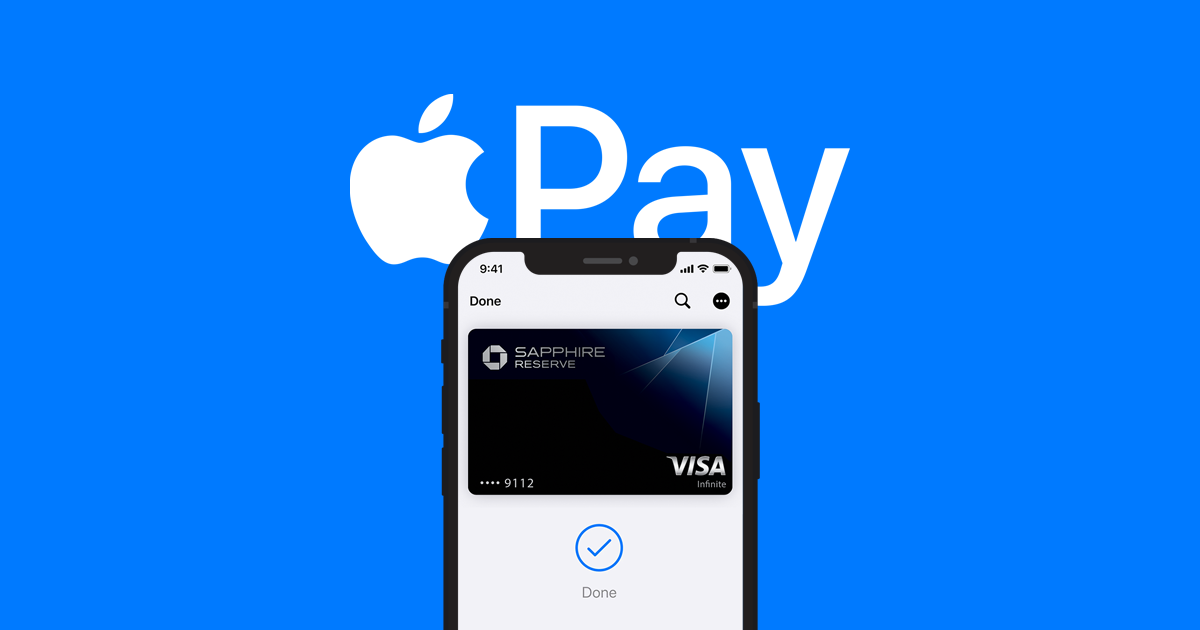
Apple Pay works in a similar way to Google Pay but it is only available for iOS devices like the iPad, iPhone, and Apple Watch. Its users can withdraw money directly from their Apple Pay accounts. If you want to develop an app like Apple Pay, then you must hire an iOS app development company who will facilitate amazing solutions.
Apple Pay protects account information using Device Primary Account Number (DPAN) technology. This allows for account numbers to be changed and encrypted.
You can transfer money to a bank account. Everywhere that allows contactless payments and on websites, Apple Pay is available.
#2. Cash App
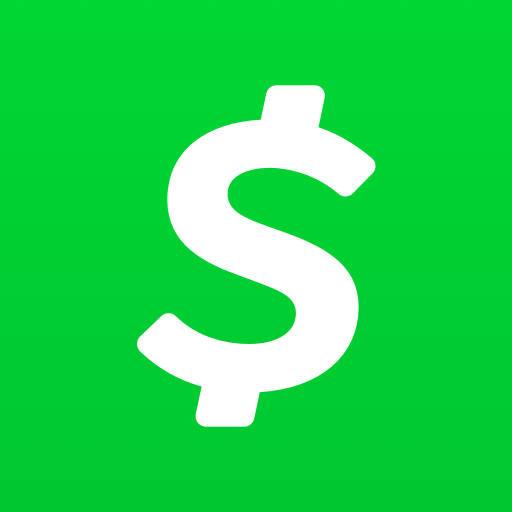
Similar to other digital wallets, Cash App also keeps payment details. However, this information is converted into tokens that can only be accessed by the user’s fingerprint.
Also, you may keep promo codes, tickets, and loyalty programmes in your wallet. Cash App allows you to have your paychecks directly deposited into the app. Users can also access Cash App to purchase investments and cryptocurrencies.
Apple and Android smartphones both support the Cash App.
#3. Dwolla

Dwolla allows you to transfer money between credit unions and bank accounts. Businesses may also utilize it for employee pay. Dwolla also offers digital wallet functions that allow businesses to receive payments for products or services, as well as recurring payments.
Dwolla can be integrated with other business apps like Plaid, Slack, and QuickBooks. This makes it more business-friendly.
#4. Google Pay
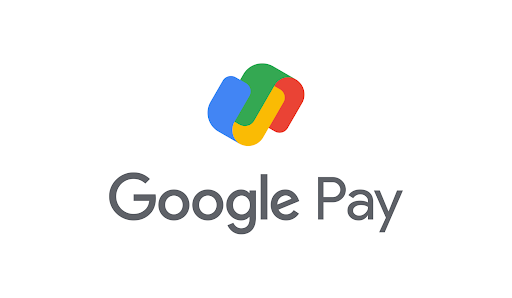
Google Pay uses DPAN as well to protect financial information. You can connect a bank account, credit card, PayPal account, or charge something in order to add money to the digital wallet.
Apple and Android smartphones can both use Google Pay. Moreover, companies may integrate Google Pay with loyalty programmes to improve customer connections. Anybody with an email account may access Google Pay online.
#5. PayPal
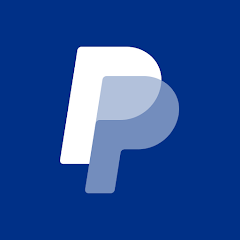
One of the first digital wallets using encryption is PayPal. It allows users to make online payments and transfer money. PayPal is available on both Android and Apple smartphones. Customers can link their PayPal accounts with other eWallets. PayPal transactions are subject to fees for businesses. Rather than utilizing the free one- to three-day transfers, consumers pay a charge for fast transfers. PayPal can be used by businesses to pay employees.
Key Features of the eWallet App
Now that you know the examples of ewallet apps, it is time for the essential features of ewallet app development.
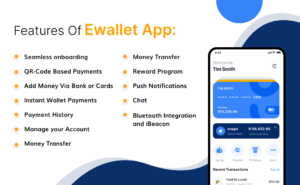
1. Seamless onboarding
If you are wondering how to launch an ewallet in morocco, it is important that you think about your future users. The first page that users view after downloading your app is the registration screen. Making the registration procedure as clear and straightforward as feasible is crucial. Because your app will be used nearly every day, it shouldn’t be difficult for users to complete the tasks they requested.
2. QR-Code Based Payments
You should ensure that your e-wallet has a QR-code scanner so payments can be made quickly and easily. Contactless payments offer greater user satisfaction, as they allow for social distance and hygiene. To integrate this feature in your app, hire android app development services.
3. Add Money Via Bank or Cards
You must decide how payments will be received by users when you start e-wallet application development. You have the option of giving other big bucks or adding credit to their wallets. They have two options for contributing money to their wallet: debit/credit card or bank transfer. We recommend that users save their preferred method for adding money to accounts.
4. Instant Wallet Payments
This is one of the most crucial features of your future electronic wallet. This app’s main purpose is to allow payments to be made instantly. This is the main reason that users will use your app.
5. Payment History
People want to see every transaction that took place with their money. The payment history must be easily accessible. This will increase customer loyalty and ensure greater transparency between your app’s users.
6. Manage your Account
This feature is essential for users who need to update or modify their bank account details, card details, and preferences. Users can use this app for stringent verification processes for every modification they perform.
7. Money Transfer
This feature allows users to quickly send money to other users. This feature has been proven to increase user numbers. You can integrate the app with your phone’s contacts to make it even easier to use. Customers can choose a person to send money to and from in just a few clicks. If you want to develop a BNPL app, you must hire dedicated developers.

8. Reward Program
Imagine that the customer can either order a cashback or bonus card directly from your wallet. These bonuses (or cashback), might require a screen that shows the balance overview, etc.
9. Push Notifications
Both sides love push notifications. Push notifications keep users informed about any changes, updates, and rewards. You can also keep users engaged and increase retention rates.
10. Chat
Money is a social tool. Google Pay and other e-wallets have built their wallet user experience around people’s relationships with businesses. It is easy to send money and chat from one place.
11. Bluetooth Integration and iBeacon
We recommend that you integrate Bluetooth and iBeacon technology to create an e-wallet which can be used in physical shops. The phone will open the app automatically if it is within close proximity of any Bluetooth beacons in the shop.
How to Launch an eWallet App in Morocco
Now the main question arises “how to develop an eWallet app”? So in this section, we will discuss the essential steps to launch an eWallet app in Morocco.
1. Analyze and Gathering of Requirements
This is the first stage to launch an ewallet app in Morocco is to analyze and gather information. Before they start the development process, custom fintech app developers will conduct extensive research. After creating an outline of features and the outlook for the interface, the team communicates with key stakeholders to discuss the vision of the payment app, the platform that will be used to build it, functional capabilities, and any other non-functional requirements.
2. Select the Preferred P2P App Type
There are many types of peer to peer payment apps. Many offer banking or other standalone services. These are the top P2P apps you should know before you start your mobile payment app design process.
3. Bank-Centric System
Many banks have started to develop their own P2P payments system in order to provide convenient and easy banking services to customers. These apps allow users to deposit money or withdraw funds directly from their bank accounts without having to visit banks. Banking apps have revolutionized the user experience. They allow users to take complete control of their finances and perform hassle-free transactions.
4. Standalone Services
These independent banks offer their own payment solutions such as Venmo, Zain Cash, and PayPal. These applications enable users to develop eWallet apps that may be used to receive payments and store money electronically as an e-wallet. These applications typically support MasterCards and visa cards.
5. Mobile OS System
These days, smartphones have an integrated payment feature. This works exactly like any mobile payment app. The best mobile OS payment systems involve Android Pay, Samsung Pay and Apple Pay.
6. Social Media Platforms
Other messenger apps and social media sites are developing in-built payment capabilities. One of the better examples is WhatsApp, and Facebook is another. Social Media users can now send money directly to their friends through the app without leaving it.

7. Create your Feature List
After you have chosen the type of P2P application you want to create, you can start to list features that you need for your mobile wallet app development. First, choose the most basic and then add more additional features. You can avoid missing anything by studying your target audience and drawing a picture of your users.
8. Work on the UI/UX Design
The next step to launch an ewallet app in Morocco is to design UI/UX. When users open your app, the first thing they notice is its appearance and how easy it is to use. The designers will balance usefulness and aesthetics to assess how well your software works.
For this reason, you must guarantee that your software is simple to use, logical, and interesting.
User interface (UI), refers to how the mobile app presents itself to users. However, the user experience (UX), is about how the users interact with the app.
9. Add Robust Security Architecture
It is essential to ensure a strong security architecture to launch an ewallet app in Morocco. End-to-end encryption is required for all information related to the user’s account as well as transaction history.
How do you ensure your application is secure?
Implement the most secure security features such as a fingerprint scanner and multi-factor authentication. Facial recognition, unique OTP, ID, and multi-factor authentication. This will prevent accidental payments. You must also ensure that your admin eWallet is secure to avoid any personal data being stolen.
Talk to your developers about other security features that can be added to your payment application in order for it to remain secure.
10. Respect regulatory compliance
As a security measure for your Zain Cash payment app, regulatory compliance is essential. You must adhere to the regional payment standards for your online payment transfer app development. There are many regulatory compliances that differ depending on where you live. You will need to select your region. These are examples of regulatory compliance as provided by different global regions.
11. Test your app
Testing is done to see if your ewallet app functions as planned. Here’s a quick checklist to help you test your app:
- Make sure that your app runs on all devices.
- You can check how the application reacts to special events such as low battery, incoming call, or airplane mode.
- You can test hardware connectivity such as Wi-Fi and Bluetooth.
- To ensure the app runs smoothly on users’ devices, test it with them.
- Receive feedback and make any necessary changes.
Remember that it takes more than a few clicks and swipes to get app users hooked and make them feel good about your app. Compuware estimates that 48% of users will abandon your app if there are constant performance problems. This is why it’s important to test your app end-to-end in order to avoid this risk and keep your users happy.
12. launch your MVP and Scale
Validate your MVP to get valuable user insights that will help you quickly iterate on your product and improve it before you develop it fully.
The pocket guide to building a minimum viable app will help you get an understanding of the MVP concept. you can release the MVP. Your mobile payment app must be capable of handling thousands of users and offer stability under load. After you have received feedback, you can update or implement them before you launch the new version of your app to production.
Technology Stack for eWallet App Development
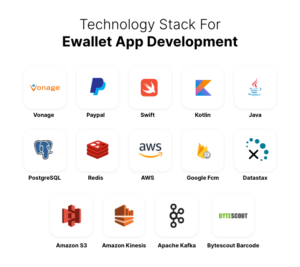
Developers use different technologies depending on the complexity of an app to launch an eWallet app in Morocco. These technologies are essential for developing an eWallet app.
- Vonage allows you to set up voice or SMS verification
- PayPal, Stripe and Braintree enable payments via a payment gateway
- Swift and Kotlin to create a mobile front-end
- Java is used to create the backend of an app
- PostgreSQL and Redis are for organizing the app’s databases
- AWS allows the app to run in the cloud
- Push notifications enabled by Google FCM
- DataStax, Amazon S3 for data storage and management
- Amazon Kinesis and Apache Kafka will run real-time analytics
- Bytescout BarCode Reader scans barcodes
Security Compliance for eWallet Application
You must ensure that your digital wallet app is secure to protect financial and personal information. The following are some of these considerations:
1. Data Privacy Regulations Compliance:
The California Consumer Privacy Act and the Global Data Protection Regulation (GDPR) are pertinent data privacy laws that developers of digital wallet applications must abide by (CCPA).
2. Secure Login and Authentication
Strong encryption should be used to protect passwords and user credentials. Multi factor authentication is also recommended for added security.
3. Secure Data Transmission
Secure communication channels, such as SSL/TLS, are required for the app to transmit data encrypted between it and the server.
4. Protection Against Fraud:
The features of a digital wallet app should detect and prevent fraud such as unauthorized access, suspicious activity reporting, and transaction monitoring.
5. Secure Data Storage
The mWallet app will securely store financial data, including credit card details, and use secure storage methods like encryption and hashing.
6. Adherence with the Payment Card Industry Data Security Standards
To ensure safe credit card and debit card processing, the application must conform to PCI-DSS standards.
7. Regular security audits and updates:
Regular security audits should be performed on the app to detect vulnerabilities and provide timely security updates.
Therefore, an eWallet app development company should consider these security requirements to launch a digital wallet app in Morocco. This will allow them to create a reliable and secure product that inspires trust in their users.
How much does it cost to launch an eWallet app in Morocco?
There are many factors that influence the cost to develop an eWallet app. The cost to launch an eWallet app in Morocco is subject to technological advancements. Let’s take a look at some key factors that impact the cost of eWallet app development.
- Complexity of the app
- Functionality and features
- Tech stack
- Model hiring
- Type of platform
- UI/UX design
- Localization of the development team
- Test the app
- Maintenance and updates
The total cost to develop an application for Android is approximately $25,000-30,000. The iOS platform costs around $30,000-$40,000,000. However, a cross-platform e-wallet app will cost around $40,000 to $50,000. These costs represent an ewallet app that has basic functionality. The total cost will vary depending on your requirements.

Conclusion
Mobile wallet development can be difficult. There are many stages and processes involved to launch an eWallet app in Morocco. Current market trends indicate that mobile wallet usage will increase even more. This is why now is the right time to realize your business idea and reap the benefits. However, a mobile application development company is the best choice if you are looking to invest in and create an eWallet app.
FAQ
1. How much time does it take to launch an eWallet app?
The time it takes to launch an eWallet app in Morocco depends on the complexity of an app, features and functionalities etc. The basic app takes 3-4 months while a complex app with advanced attributes integrates takes 6-7 months.
2. Which are the 5 best methods to monetize an app for eWallet?
Your main goal as an entrepreneur should be to make a profit after launching your P2P payments app. These are the top ways you can monetize your money transfer application:
- In-app purchase
- In-app advertising
- Freemium version
- Sponsorship and partnership
- SMS marketing



